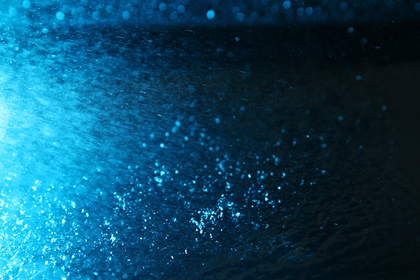A Spa Is Not A Small Pool

Wednesday, September 20, 2023
Spas and pools are both filled with water and need to be tested and treated regularly, but that's where the similarities end. Understanding the uniqueness of a spa (some people call it a hot tub)—its higher temperature, smaller volume, jetted water, and likelihood of high bather load—is important to establish a proper testing and treatment regime.
While pools are generally in the 78°F to 84°F range, spas run 96°F to 104°F. Hot water, coupled with jet action, encourages the release of organic wastes and bacteria growth. Did you know soaking in a spa promotes sweating, and sweat contains some of the same metabolic wastes found in urine? That an adult bather sheds about 1 billion bacteria when entering a spa? That most people don't shower before entering a spa?
This massive introduction of organic wastes creates a high sanitizer demand, which is defined as the amount of sanitizer needed to react with all contaminants before any disinfecting residual is available. Hot water also speeds up chemical reactions. It's possible for only 2 people in a 400-gallon spa to deplete a sanitizer level of 2 ppm bromine or 1 ppm free chlorine in just 15 minutes or less.
In the absence of adequate sanitizer, certain bacteria populations can double every 20 minutes. This can present a serious situation since some bacteria are infection- and disease-causing, even life-threatening. Legionella pneumophila, which causes Legionnaires' disease, can be fatal if inhaled with water vapor from a spa. The most common spa-related ailment, dermatitis, is caused by bacteria. Harmful viruses, protozoans, and fungi will also flourish in untreated—and inadequately treated—water.
The National Swimming Pool Foundation’s current recommendation for proper spa sanitation and oxidation is 3?5 ppm chlorine and 4?6 ppm bromine. The Association of Pool & Spa Professionals’ current recommendation is 2?4 ppm chlorine for residential spas and 3?4 ppm chlorine for public spas. For bromine users, their recommendation is 2?4 ppm bromine for residential spas and 4?6 ppm bromine for public spas.
Although there is less water in a spa than a pool, that doesn't mean a spa requires less care. Actually, a spa's small volume requires more exact treatment, which is why it's referred to as "teaspoon chemistry," and frequent testing, especially by commercial operators. And, unlike pool owners, spa owners must drain and refill the vessel with fresh water on a regular basis.
Use the dumping formula to determine the number of days between complete drainage:
# of days = 1/3 volume in gallons ÷ maximum # of daily bathers
OR
# of days = volume in liters ÷ 10 x max. # of daily bathers
(In this formula, a "bather" is equivalent to one 20-minute soak.)
Treating a spa as if it were a small pool can lead to severe water quality problems and equipment failure. To protect bathers and minimize the cost of operation, it's essential for owners and operators to understand the unique aspects of spa maintenance.